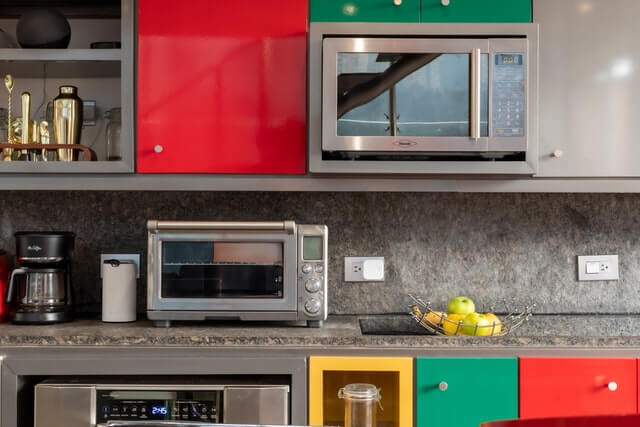Cracks In Pottery: 6 Reasons Why Your Clay Keeps Cracking
Pottery making can be such a fun and rewarding activity, but it can also be frustrating when you put all that effort into creating a piece only to have it crack during the drying process.
Unfortunately, this is a common issue as pottery is quite delicate and prone to cracking.
The main culprit is usually uneven drying, where some parts of the pottery shrink more than others.
But don’t worry, there are ways to avoid this!
The key to preventing your clay from cracking is to understand all the reasons why clay might crack in the first place.
So let’s go over the most common reasons first.
What causes pottery to crack?
Clay is more likely to crack when drying if you are using the wrong type of clay, didn’t wedge properly, have walls of uneven thickness, use poor joints, dry the clay unevenly, or fire the clay unevenly.
1. Type of clay
The type of clay used can affect the likelihood of pottery cracking when drying.
Clay with high plasticity, meaning it has more water and smaller particles, tends to crack more. Porcelain clay, despite not being a plastic clay, also has a high water content and is prone to shrink quickly, making it more likely to crack.
Using clay with grog, which are fired and ground particles added to the clay, can help space the particles in the clay and allow for easier moisture evaporation, reducing the likelihood of cracking.
2. Insufficient wedging
The preparation of clay is crucial to prevent pottery from cracking. Wedging the clay is essential to ensure that the clay is of a consistent density and moisture content.
If clay is not wedged enough, it may contain air bubbles or have varying levels of moisture, which can result in uneven drying and increase the chance of cracking.
Wedging clay involves kneading it to make it malleable and distribute the moisture evenly, remove air bubbles and soften it.
Clay with an even consistency is homogeneous and is less likely to crack during firing.
3. Uneven thickness
One of the main reasons pottery cracks during the drying process is due to uneven thickness in the design.
The thicker parts of the clay take longer to dry, while thinner parts dry more quickly, resulting in stress on the ceramic body and causing cracks.
To prevent this, one should aim for even thickness in the pottery and simplify intricate designs. Or ensure that intricate parts of the design have a similar thickness to other areas.
Sometimes applying some wax resist before firing can also help to prevent cracks in certain areas.
4. Poor joints
Weakness and variable thickness in joints can cause pottery cracks.
To avoid this, the pieces must be joined well by scoring and using slip to paint on the scored areas before joining.
A joint is a known weak point in a clay vessel, and poorly joined pottery can crack or come apart during firing.
To join clay pieces together, a technique called “slip and score” is used where the surface of the clay is scratched or scored, and then a liquid mixture of clay in water (slip) is applied to the scored area to functionally join the pieces.
5. Uneven drying
Clay has a lot of water, and when it dries, the water evaporates and can cause the clay to shrink, which can create stress and cracks.
Uneven drying can happen because some parts of the clay might be thicker and take longer to dry than others, or the surface might dry more quickly than the deeper layers.
This can be especially problematic with larger pieces, which are more prone to cracking. To prevent this, it’s important to make sure the pottery is heated evenly and that all areas of the piece receive consistent airflow.
One way to do this is by turning the pottery while heating it, or placing it on a rack in the oven. It’s also important to add small amounts of water to any areas that are drying too quickly, and to cover the pottery with plastic while it dries to prevent uneven drying from air conditioners or fans.
Drying your clay evenly can be particularly challenging during low humidity levels in the air, since that will accelerate the drying.
6. Uneven kiln firing
Pottery can crack if it is not heated evenly in the kiln.
To keep your clay from cracking, it is important to control the heat, length and drying capacity of the kiln.
Electric powered kilns are the best option for even heating, and it is important to invest in a high-quality kiln to control the firing process.
Different types of kilns are available, but it is crucial to find a quality kiln to avoid cracking.
How to stop clay from cracking
If you’re having trouble with your pottery clay cracking, there are some simple things you can do to help stop this from happening.
First, try to keep your clay at an even thickness. You should also cover your ware with a plastic bag to control the drying process, or use a damp box.
Protect areas that dry out faster with plastic or wax resist, and put your pottery on a shelf to help with airflow.
Also, make sure that you join your pieces of clay together properly and don’t use very intricate designs.
Conclusion
I hope after reading this article, you now know how to dry your clay without cracks.
It all comes down to making sure that your pots have even thickness and dry evenly.
Of course, that’s easier said than done. And even with these tips, you might still find a crack in your pottery from time to time.
If you do find cracks, read this article on fixing hairline cracks for possible solutions.



